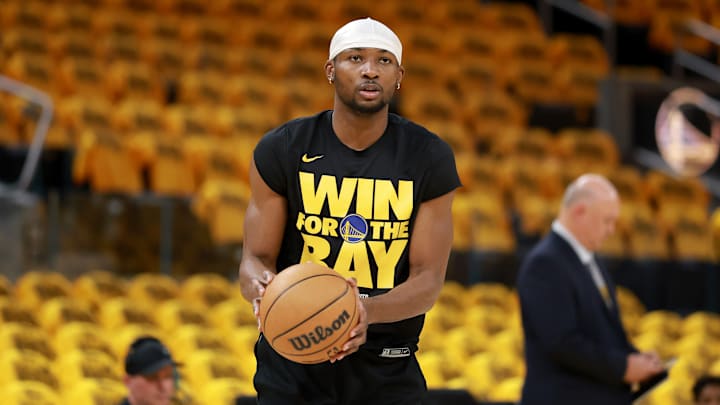When the Golden State Warriors selected Jonathan Kuminga at No. 7 overall in the 2021 NBA Draft, a bright future seemed to be inevitable. Golden State had brought in three lottery picks in a span of 12 months, and Kuminga looked the part of the scorer who could simplify the game for the veterans.
Unfortunately, the Warriors prioritized immediate value above all else and ultimately created unnecessary hurdles for Kuminga to leap over during his developmental process.
It's difficult to be too angry with the Warriors, as their logic was admittedly sound. They won three championships between 2015 and 2018, won a fourth title in 2022, and advanced past the first round of the playoffs in 2022-23 and 2024-25.
Those results certainly support the belief that Golden State can still win at a championship-caliber level with Stephen Curry and Draymond Green at the heart of their success.
As such, head coach Steve Kerr was at least partially in the right for prioritizing a win-now mentality. Star-caliber players are extending their primes in unprecedented manners, but there's no guaranteeing that the next season will be as fruitful as the one that's being played.
Unfortunately, the Warriors' inability to strike a balance between building for the future and winning immediately has cost Kuminga the opportunity to develop into the player they need him to be.
Warriors' hurt by inability to balance winning and building for the future
It's easy to forget that, after four NBA seasons, Kuminga is still just 22 years of age. History would thus suggest that he's years away from his prime, and could play for more than another decade if he finds the right fit and system, avoids injury, and refines his skill set.
Unfortunately, Golden State hasn't yet proven to be the right fit or system—due in no small part to the virtually nonexistent margin for error Kuminga consistently faces.
Kuminga has proven to have extraordinary upside as a scorer, averaging 20.5 points per 36 minutes on 50.7 percent shooting from the field through four seasons. That translated to the 2025 NBA Playoffs, when he averaged 15.3 points per game, as well as 24.3 over his final four appearances.
Unfortunately, Kuminga was also a healthy scratch on four separate occasions—the epitomization of his experience with the Warriors up to this point.
There's no way around the fact that he has flaws as a player, including off-ball inefficiency that limits his value as a scorer. The issue with how Golden State has addressed those areas of weakness, however, is that they've become an absolute point of reference when debating his placement with the team.
Kerr has even gone as far as publicly stating that he doesn't believe Kuminga can play big minutes alongside the core of Jimmy Butler, Curry, and Green.
Rather than allowing Kuminga to play through his mistakes and learn from experience, he's been held to a standard of virtual perfection. It's a fair viewpoint from a certain perspective, but the Warriors have impeded a key young player's growth by not allowing them to learn by fire—and thus capped their own ceiling with the roster in place due to the growth they expected not coming to fruition.
Kuminga is by no means blame-free, but the Warriors must learn from their mishandling of his development to ensure the future is brighter and less reliant on big splashes in the trade market.
